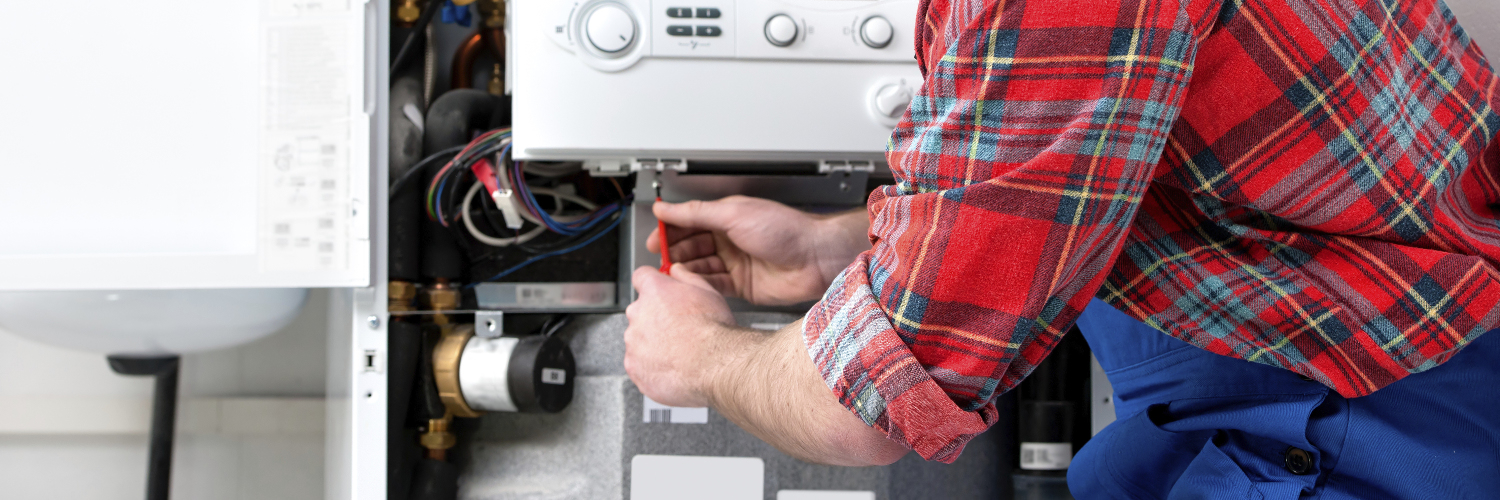Prepare your Boiler for Winter: The Ultimate Guide

Introduction
It's essential to ensure that your boiler is in good working condition to provide you with reliable and efficient heating. Boiler winter maintenance is crucial to prevent unexpected breakdowns, reduce energy consumption, and maintain a comfortable indoor temperature. Our comprehensive maintenance service includes a series of checks and procedures to ensure your boiler is running at its best.
Why Is Winter Maintenance Important?
During the winter, your boiler works harder to keep your home warm. Cold temperatures can put additional strain on the system, leading to potential issues. Regular winter maintenance helps identify and address problems early on, preventing costly breakdowns and ensuring efficient operation. It also improves safety by reducing the risk of carbon monoxide leaks, a silent but deadly threat.
Essential Boiler Winter Maintenance Tasks And Tips
Bleeding Radiators
If your radiators feel cold at the top or have cold spots, it may be necessary to bleed them. Air can accumulate in the system over time, preventing efficient heat distribution. To bleed a radiator, follow these steps:
Turn off the heating system and allow the radiators to cool down. Locate the bleed valve on each radiator. It is usually located at the top, either on the side or back. Place a towel or container beneath the valve to catch any water. Use a radiator key or a flat-blade screwdriver to slowly turn the valve counterclockwise. You will hear a hissing sound as air escapes. Once water starts to drip, close the valve by turning it clockwise. Be careful not to overtighten.
Checking Pressure Levels
Maintaining the correct pressure in your boiler is crucial for efficient and safe operation. Low pressure can lead to inadequate heating, while high pressure can cause damage. To check the pressure:
Locate the pressure gauge on your boiler. It is usually found the on front panel. Ensure that the boiler is switched on and the system is at operating temperature. 3 The pressure gauge should. indicate the recommended pressure range. Typically, it should be between 1 and 1.5 bar. If the pressure is too low, consult your boiler's manual to learn how to repressurize it. If it's too high, contact a qualified heating engineer for assistance.
Inspecting and Cleaning the Boiler
Regular inspection and cleaning of your boiler are essential to maintain its efficiency and reliability. Follow these steps:
Switch off the boiler and allow it to cool down. Inspect the boiler for any signs of damage, such as cracks or leaks. If you notice anything unusual, contact a professional for repairs. Use a soft brush or vacuum cleaner to remove dust and debris from the boiler's exterior. Carefully clean the boiler's vents and flues to ensure proper ventilation. Blocked vents can lead to carbon monoxide buildup. Refer to your boiler's manual for specific cleaning instructions and any additional maintenance tasks.
Checking for Leaks
Water leaks from your boiler can indicate a problem that needs attention. Check for any signs of leakage, such as puddles or dampness around the boiler or pipes. If you notice a leak, contact a qualified heating engineer to diagnose and fix the issue promptly.
Testing Carbon Monoxide Detectors
Carbon monoxide (CO) is a colorless and odorless gas that can be produced by faulty boilers. It is extremely dangerous and can cause severe health problems or even death. Ensure your home is equipped with working carbon monoxide detectors and test them regularly. If a detector's battery is low or it is not functioning correctly, replace it immediately.
Servicing the Boiler
Regular professional servicing of your boiler is crucial for its long-term performance and safety. A qualified heating engineer can conduct a comprehensive inspection, clean internal components, and identify any potential issues. It is recommended to schedule a boiler service annually before the start of the winter season.
Comparison Table of Boiler Models
Below is a comparison table of different boiler models to help you make an informed decision when purchasing a new boiler. The table includes key specifications and features for each model.
| Boiler Model | Efficiency (AFUE) | Size (MBtu/hr) | Features |
|---|---|---|---|
| Model 1 | 80% | 50 | - Electronic ignition - Multiple stages of heat - Low water cutoff |
| Model 2 | 85% | 75 | - Condensing technology - High efficiency - Durable stainless steel heat exchanger |
| Model 3 | 90% | 100 | - Advanced modulating technology - Smart features, such as Wi-Fi connectivity and remote monitoring - Compatible with solar panels |
| Model 4 | 95% | 150 | - Highest efficiency in its class - Large capacity for larger homes or commercial applications - Innovative heat exchanger design |
Conclusion
Proper winter maintenance of your home's boiler is essential to ensure reliable heating, improve efficiency, and enhance safety. By following the essential maintenance tasks and tips outlined in this guide, you can minimize the risk of breakdowns, extend the lifespan of your boiler, and keep your home warm and comfortable throughout the winter season. Remember to consult your boiler's manual and seek professional assistance when needed. Stay cozy and safe
Similar topics
- How to Maintain the Boiler?
- How do I prepare my boiler for winter?
- How do I clean my boiler for the winter?
- Ways To Prepare Your Boiler for Winter.
- Tips to Help Maintain Your Boiler System in the Winter.
- BOILER MAINTENANCE AND CHECKS.
- Winter Boiler Maintenance Tips.